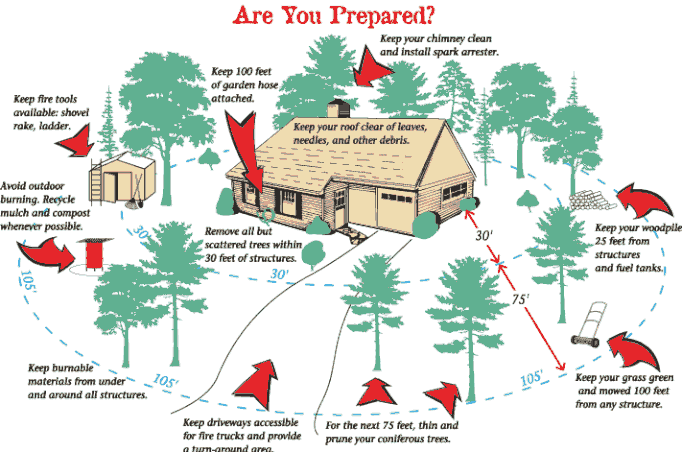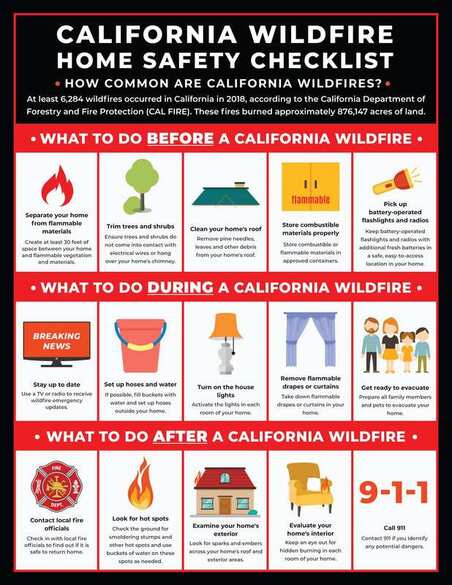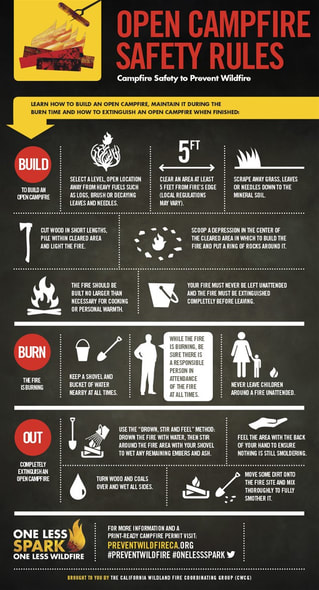Wildfires are a natural part of both the Sierra Nevada and Great Basin ecosystems. Many plants and animals are adapted to survive and thrive with regular wildfires. However, due to human impacts like climate change, fire suppression, invasive species, and outdoor recreation, the fire regimes (intensity and frequency of fires) of these areas have changed. Communities in and near wildlands must prepare for more frequent and intense fires and monitor local fires and fire regulations in their area.
Please follow all recreation and fire restrictions from the US Forest Service. These regulations are in place for your safety, the safety of our communities, the safety of the lands we love, and those fighting wildfires.
Fire Maps |
Local Fire and Forest Information |
|
Fire maps show current and contained wildfires in a given area, as well as information for residents in those areas. Visit these sites regularly during wildfire season to receive accurate, up-to-date information.
Nevada Fire Map California Fire Map National Large Incident Fire Map National Interagency Fire Center Updates |
The following links provide up-to-date information about our National Forests. Please refer to these links and subscribe to relevant Alerts and Notifications.
Humboldt-Toiyabe National Forest Alerts and Notifications Humboldt -Toiyabe National Forest Fire Restrictions and Closures Tahoe National Forest Alerts and Notifications Pacific Southwest Region (California) National Forest Alerts and Notifications |
Wildfire Safety Information
Campfire Information
Wildfires & Asbestos Exposure
Along with other natural disasters, wildfires pose a threat for asbestos exposure as they move into cities and residential neighborhoods with structures built before 1980, when asbestos was commonly used in construction. Breathing in this toxic fiber can cause a rare but serious disease called mesothelioma. Due to its long latency period, many patients are not diagnosed until much later in life. Symptoms include shortness of breath, dry cough, and chest pain. If your home or neighborhood was built before 1980, you are at higher risk of asbestos exposure from a wildfire. But keep in mind that wind can blow smoke, soot and ash for miles, potentially exposing residents in nearby communities to asbestos fibers mixed into these particles.
Only a N-100 or P-100 respirator will properly filter out tiny asbestos fibers that may be mixed with smoke and ash. Here are some other helpful tips before, during, and after a wildfire:
Only a N-100 or P-100 respirator will properly filter out tiny asbestos fibers that may be mixed with smoke and ash. Here are some other helpful tips before, during, and after a wildfire:
- Have a N-100 or P-100 disposable respirator mask for yourself and each family member
- Designate a room that can be closed from outside air, especially if you are not ordered to evacuate
- After a fire, wet down any possible asbestos-containing materials before handling them
- Use a HEPA vacuum to clean up soot and ash
- Double bag all debris, and do not move any damaged construction materials unless absolutely necessary



